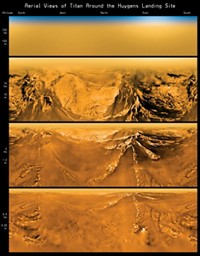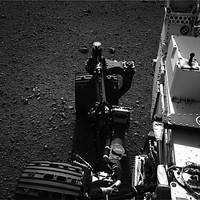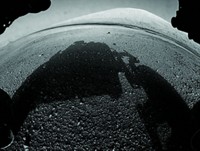Advertisement
Grab your lab coat. Let's get started
Welcome!
Welcome!
Create an account below to get 6 C&EN articles per month, receive newsletters and more - all free.
It seems this is your first time logging in online. Please enter the following information to continue.
As an ACS member you automatically get access to this site. All we need is few more details to create your reading experience.
Not you? Sign in with a different account.
Not you? Sign in with a different account.
ERROR 1
ERROR 1
ERROR 2
ERROR 2
ERROR 2
ERROR 2
ERROR 2
Password and Confirm password must match.
If you have an ACS member number, please enter it here so we can link this account to your membership. (optional)
ERROR 2
ACS values your privacy. By submitting your information, you are gaining access to C&EN and subscribing to our weekly newsletter. We use the information you provide to make your reading experience better, and we will never sell your data to third party members.
Physical Chemistry
To The Moon, Alice
Two spacecraft launched on lunar exploration missions
by Elizabeth K. Wilson
June 19, 2009

After a successful blast-off from Cape Canaveral on June 18, two space probes are on their way to the moon on a scouting expedition for future human exploration.
Thunderstorms and lightening had threatened to scrub the launch of the National Aeronautics and Space Administration's Lunar Reconnaissance Orbiter (LRO) and Lunar Crater Observation and Sensing Satellite (LCROSS). But 17 minutes before Thursday's third launch opportunity, engineers gave the go-ahead.
The two spacecraft, carried aloft together on one rocket, have different objectives. LRO, which NASA is billing as "leading the way back to the moon," will arrive at the moon on June 22. After about two months settling into orbit, the craft will begin mapping the lunar surface, examining potential landing sites.
Meanwhile, LCROSS is on a suicide mission to search for water ice in the moon's perennially shadowed polar areas. In October, LCROSS will eject the spent second stage of the launch rocket, which will crash onto the surface, throwing up tons of debris. LCROSS and LRO instruments will look for water in the ejected material, said Jay Jenkins, program executive at NASA headquarters in Washington, D.C. Then the LCROSS craft itself will crash to the surface, throwing up another plume also to be analyzed.
The two missions, which cost about $600 million, are the first of a series of projects under NASA's Vision for Space Exploration. The program was enacted by the Bush Administration in 2004 to further human exploration of the moon and Mars.





Join the conversation
Contact the reporter
Submit a Letter to the Editor for publication
Engage with us on Twitter